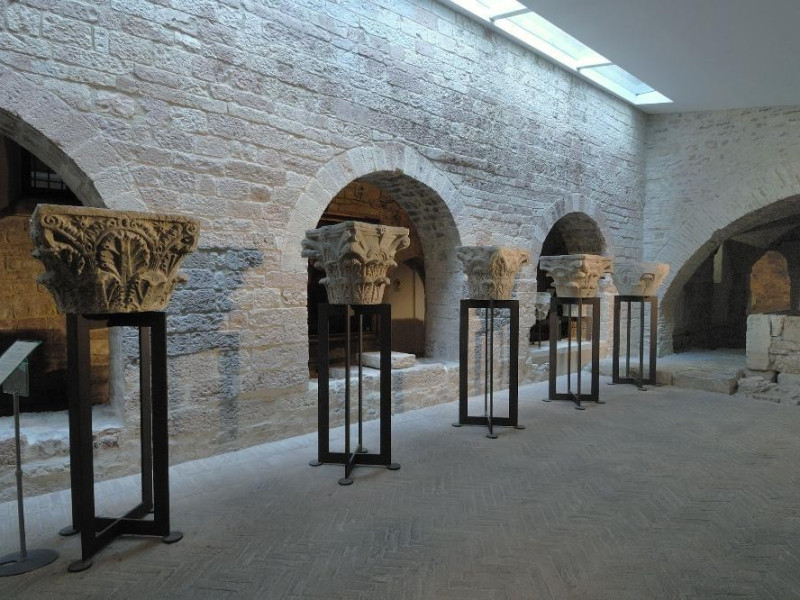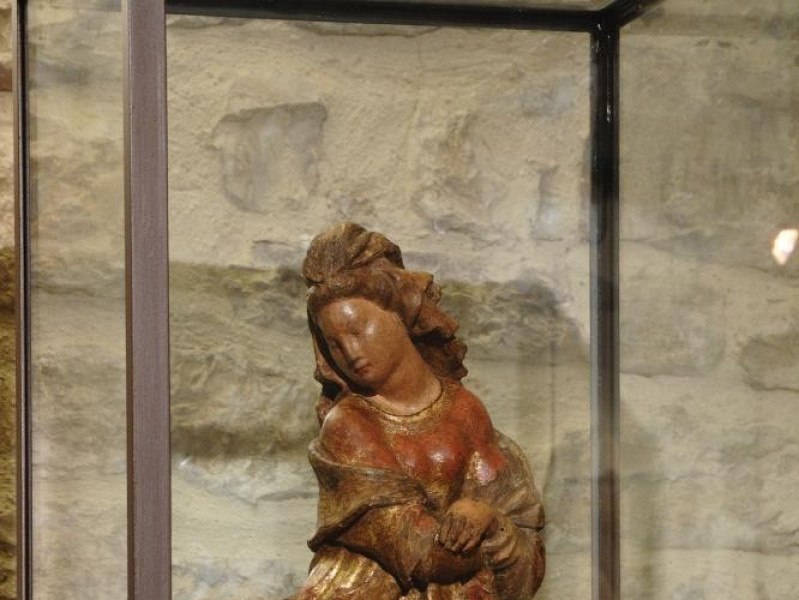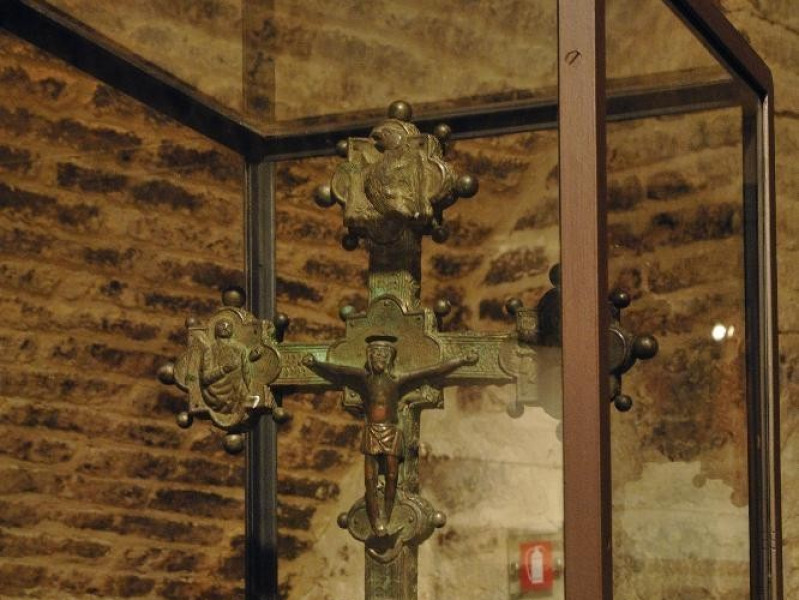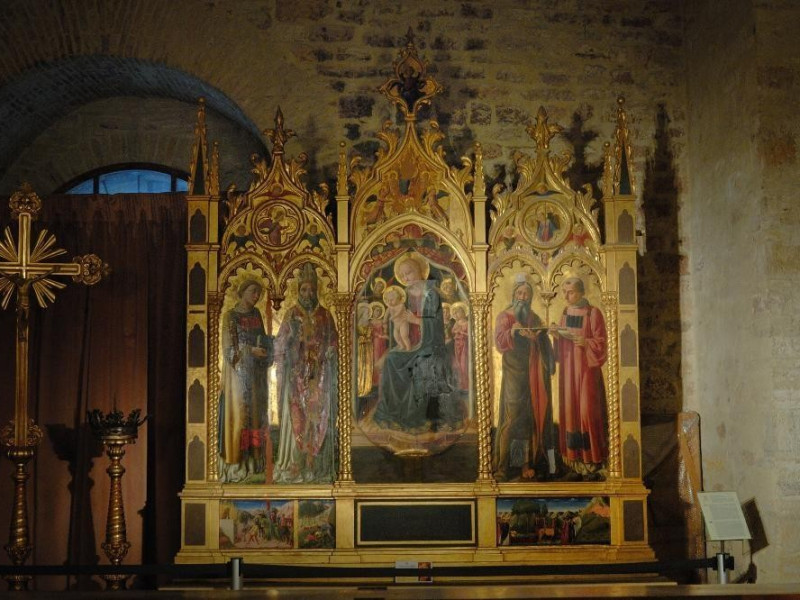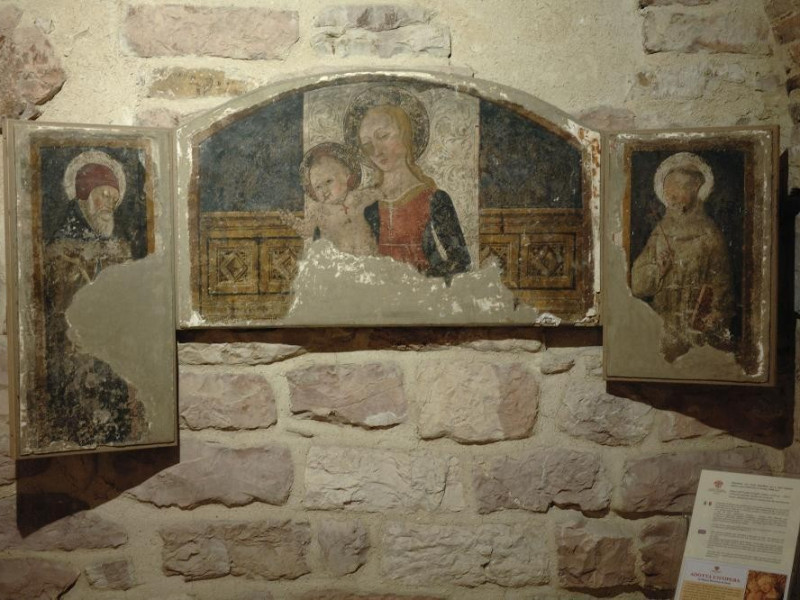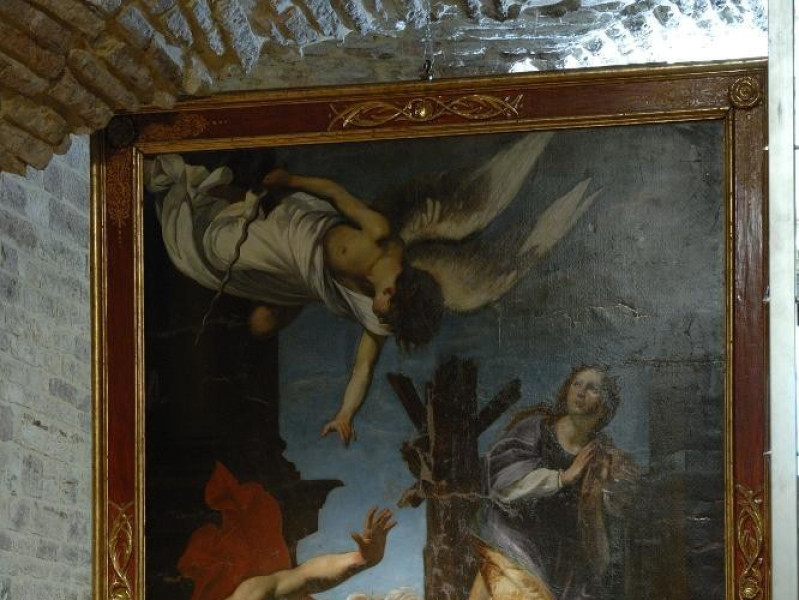Luogo - Museum
Museo diocesano e cripta di San Rufino
Where
Piazza San Rufino, 3, Assisi (Perugia)
Diocesan Museum and Crypt of San Rufino
The Museo Diocesano and the Cripta di San Rufino are in Piazza San Rufino, in the northwest sector of Assisi. This has been the area of the Superior Terrace, whose squared travertine marble blocks on the southern side of the wall are still visible inside the Cathedral and Crypt of San Rufino, since the 2nd century B.C. Along the wall, near the bell tower, there is a quadrangular water cistern. The Museum itinerary goes through the Crypt of San Rufino, through the medieval cloister and enters into the next building’s subterranean foundation passages, the Palazzo dei Canonici. In the area of the Cathedral, some traces of an ancient center of ceramic production, dating back from the 1st century B.C., have been found.
The Museum was rearranged in 2006. The collection, instituted in 1941 by the Bishop Giuseppe Placido Nicolini, includes works pertaining to the Cathedral or coming from the Confraternity Oratories of Assisi and suppressed parishes. They are subdivided into five sections: detached frescoes; paintings on wooden panels and on canvases; liturgical items; goldsmith items; and Ancient Roman and medieval gravestones.
Among the works recommended there are the frescoes of the Master of Santa Chiara and those of Pace di Bartolo and Puccio Capanna. The latter, coming from the Oratorio of San Rufinuccio, represents some episodes of The Passion of Christ. Dating back to 1334, they are inspired by the painting cycle in the Basilica di San Francesco, and particularly by the frescoes of Pietro Lorenzetti to whom Puccio Capanna looks for inspiration for the framework of his composition in The Flagellation. The professional banners are also very interesting, in particular the one coming from the Confraternita di Santa Caterina d’Alessandria, dated around 1625, depicting The Martyrdom of St Catherine of Alessandria and SS James and Anthony Abbot, which is largely attributed to the artist Orazio Riminaldi from Pisa. In the Museum, there is also preserved: a Polyptyc of Niccolò Liberatore, called the Alunno, and paintings of Matteo di Gualdo, Dono Doni and Cesare Sermei.
An important space in the Exhibition is taken by a donation, the Perkins Collection, a legacy from the American Art reviewer Federico Mason Perkins, who died in 1955 and was deeply bound to Assisi. Above all, this collection contains works that predominantly come from the Tuscan school between the 14th and 15th centuries. Among the featured artists there is: Jacopo della Quercia, Filippo Lippi, Francesco di Giorgio Martini and Duccio di Buoninsegna.


